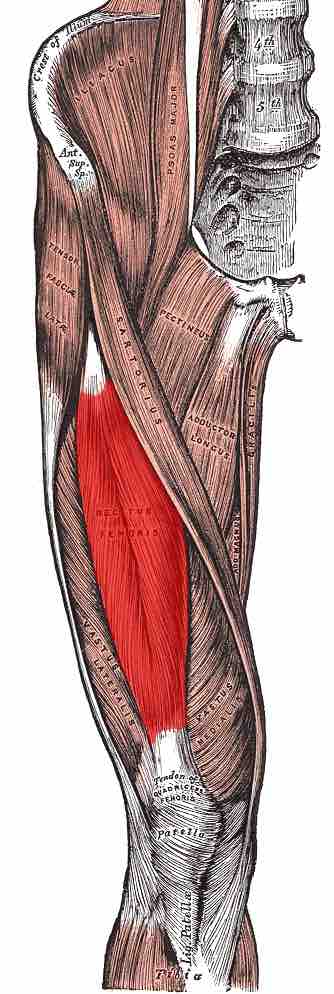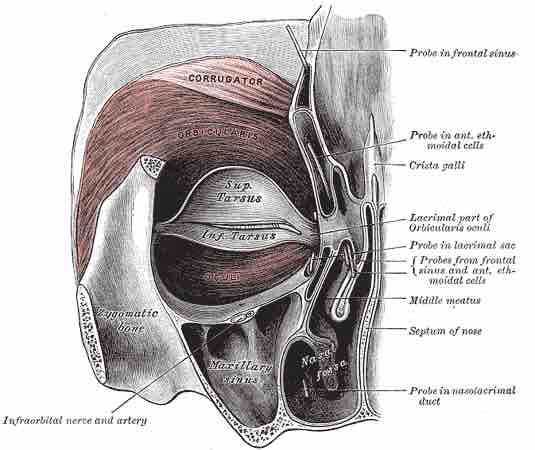A motor unit consists of a single alpha motor neuron and all of the corresponding muscle fibers it innervates; all of these fibers will be of the same type (either fast twitch or slow twitch).
When a motor unit is activated, all of its fibers contract. Groups of motor units often work together to coordinate the contractions of a single muscle. All of the motor units that subserve a single muscle are considered a motor unit pool.
The number of muscle fibers within each unit can vary. Thigh muscles, for example, can have a thousand fibers in each unit, eye muscles might have ten. In general, the number of muscle fibers innervated by a motor unit is a function of a muscle's need for refined motion.
The smaller the motor unit, the more precise the action of the muscle. Muscles requiring more refined motion are innervated by motor units that synapse with fewer muscle fibers.

Rectus femoris
The rectus femoris muscle is one of the four quadriceps muscles of the human body. These muscles may have as many as a thousand fibers in each motor unit.

The orbicularis oris (eye) muscle
These small motor units may contain only 10 fibers per motor unit. The more precise the action of the muscle, the fewer fibers innervated.
Motor unit recruitment is the progressive activation of a muscle by the successive recruitment of motor units to accomplish increasing gradations of contractile strength. The activation of more motor neurons will result in more muscle fibers being activated, and therefore a stronger muscle contraction.
Motor unit recruitment is a measure of how many motor neurons are activated in a particular muscle. It is therefore a measure of how many muscle fibers of that muscle are activated. The higher the recruitment, the stronger the muscle contraction will be.
Motor units are generally recruited in order of smallest to largest (from fewest fibers to most fibers) as contraction increases. This is known as Henneman's Size Principle.
Motor Unit Categories
Motor units are generally categorized based upon the similarities between several factors such as:
Physiological
Contraction speed in isometric contractions:
Biochemical
Histochemical (the oldest form of biochemical fiber typing):
- Glycolytic enzyme activity.
- Oxidative enzyme activity.
- Sensitivity of myosin ATPase to acid and alkali.
Immunohistochemical (a more recent form of fiber typing):
- Myosin heavy chain (MHC).
- Myosin light chain—alkali (MLC1).
- Myosin light chain—regulatory (MLC2).
Functional Example
The quadriceps muscles contain many thousands of muscle fibers in general, both slow and fast twitch, to produce sufficient force for body movements such as standing, walking, running, and jumping.
The eye muscles, on the other hand, contain few muscle fibers, enabling them to be more exact in movement so that vision is not jumpy, but consequently they produce very little force.